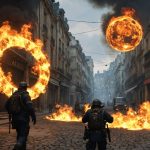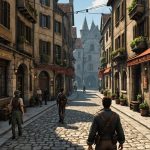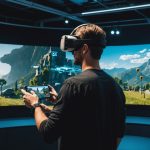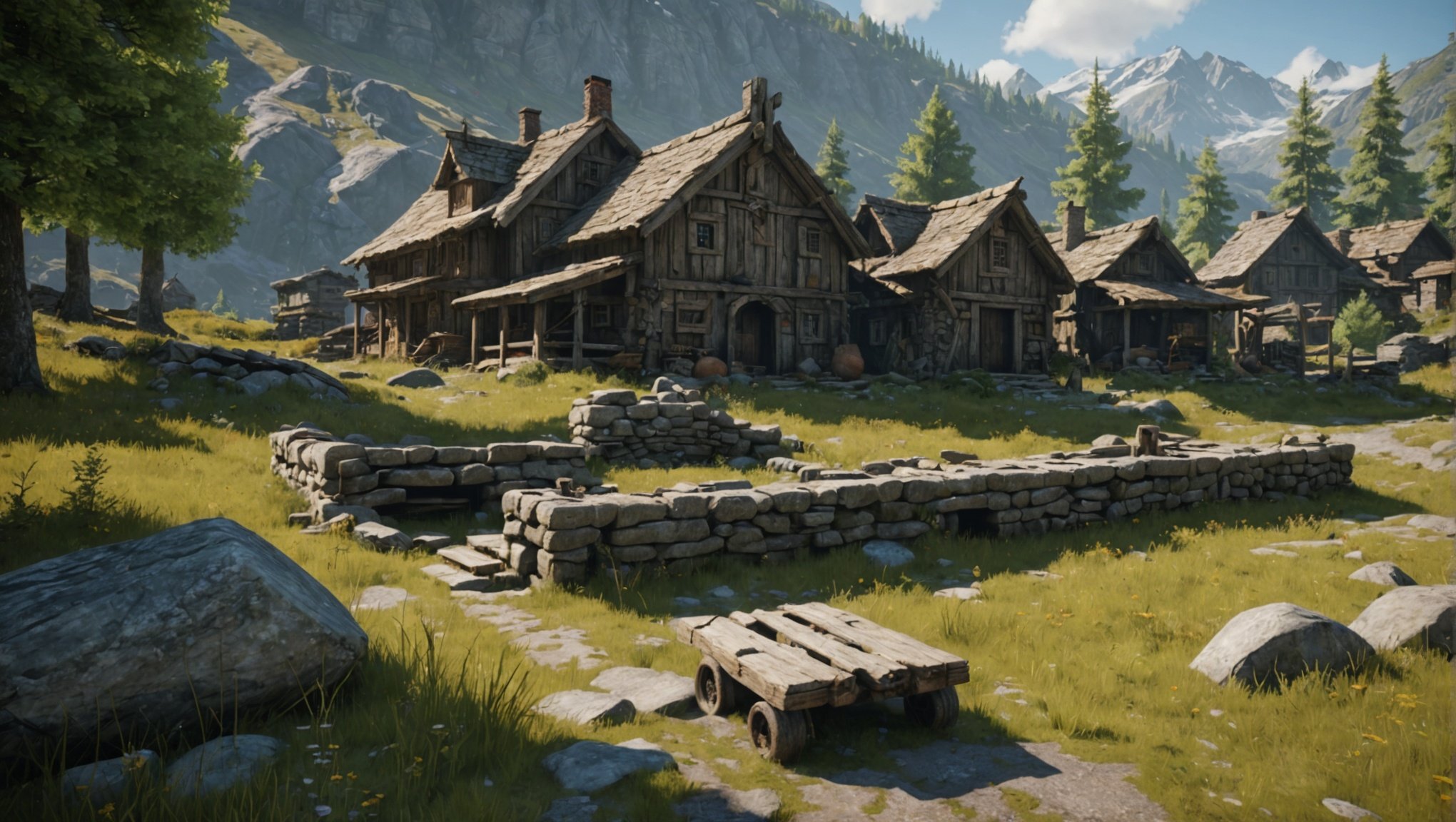Open-world games have evolved tremendously over the past few decades, and players now expect unprecedented levels of realism and immersion. Developers are continuously seeking innovative techniques to meet these rising expectations. One emerging trend is the integration of photogrammetry with procedural generation. This fusion can significantly enhance the visual and experiential realism of open-world games, providing gamers with a more authentic and captivating experience.
What is Photogrammetry and Why is it Important?
Photogrammetry is a technique that uses photographs to create detailed 3D models of real-world objects and environments. By capturing multiple images from different angles, developers can reconstruct accurate textures, shapes, and details. This technology has revolutionized various industries, including gaming, due to its ability to quickly and efficiently produce high-quality assets.
Additional reading : What are the most effective techniques for creating realistic fire effects in action games?
In the context of video games, photogrammetry provides a way to bring real-world textures and models into a virtual environment. This results in stunningly realistic visuals that are difficult to achieve through traditional 3D modeling and texturing methods. The use of real-world data ensures that the digital representations are highly detailed and authentic, enhancing the overall immersive experience for players.
However, while photogrammetry offers unmatched realism, it comes with its own set of challenges. The process can be time-consuming and resource-intensive, requiring specialized equipment and software. Moreover, integrating these high-fidelity assets into a game requires careful optimization to ensure performance and compatibility across different platforms.
Topic to read : How can developers use AI to enhance the realism of character interactions in social simulation games?
Despite these challenges, the benefits of photogrammetry in game development are undeniable. By leveraging this technology, developers can create more lifelike environments that captivate players and set new standards for visual quality in gaming.
The Role of Procedural Generation in Game Development
Procedural generation refers to the creation of game content algorithmically rather than manually. This method can be used to generate various elements such as landscapes, buildings, and even entire game worlds. The key advantage of procedural generation is its ability to create vast, diverse environments quickly and efficiently.
In open-world games, procedural generation can be a game-changer. It allows developers to create expansive worlds with endless possibilities, ensuring that no two playthroughs are ever the same. This not only adds replayability but also reduces the workload on developers, as they don’t have to manually design every single element of the game world.
Despite its advantages, procedural generation is not without its drawbacks. One of the main challenges is achieving a balance between randomness and coherence. While procedural generation can create diverse landscapes, it can also result in environments that feel disjointed or lack a sense of purpose. Another challenge is ensuring that the generated content meets the desired level of quality and realism.
Nevertheless, when used effectively, procedural generation can significantly enhance the scope and depth of open-world games. By combining this technique with photogrammetry, developers can achieve a level of realism that was previously unattainable.
Integrating Photogrammetry with Procedural Generation
The integration of photogrammetry and procedural generation in game development is a promising approach to creating highly realistic and immersive open-world games. While each technique has its strengths and weaknesses, their combined use can offset individual limitations and produce superior results.
One of the primary ways to integrate these two technologies is through the use of photogrammetry assets as a foundation for procedural generation. For example, developers can use photogrammetry to capture high-fidelity textures and models of real-world objects and environments. These assets can then be incorporated into a procedural generation algorithm to create diverse and realistic game worlds.
This approach allows developers to leverage the realism of photogrammetry while benefiting from the efficiency and versatility of procedural generation. By using real-world data as a basis for procedural algorithms, developers can ensure that the generated content maintains a high level of detail and authenticity.
Another method of integration involves the use of hybrid techniques. For instance, developers can manually create key landmarks or focal points using photogrammetry and then use procedural generation to fill in the surrounding areas. This ensures that crucial elements of the game world are highly detailed and realistic, while still allowing for the efficient creation of expansive environments.
Moreover, advances in machine learning and AI can further enhance the integration process. By training AI algorithms on photogrammetry data, developers can improve the quality and coherence of procedurally generated content. This can help address some of the challenges associated with procedural generation, such as maintaining consistency and achieving a natural look.
Benefits of Enhanced Realism in Open-World Games
Integrating photogrammetry with procedural generation offers several benefits that can significantly enhance the realism and immersion of open-world games. These advantages include improved visual quality, increased player engagement, and greater efficiency in game development.
First and foremost, the use of photogrammetry ensures that the game’s visual assets are highly detailed and true to life. This adds a level of authenticity that is difficult to achieve through traditional methods. When combined with procedural generation, this realism extends across the entire game world, creating a cohesive and believable environment.
Enhanced realism also leads to increased player engagement. Players are more likely to become immersed in a game that looks and feels real. This immersion can enhance the overall gaming experience, making it more enjoyable and memorable. Additionally, realistic environments can evoke a stronger emotional response from players, further deepening their connection to the game.
From a development perspective, the integration of these technologies can lead to greater efficiency and productivity. Procedural generation reduces the need for manual design work, allowing developers to focus on other aspects of the game. Meanwhile, photogrammetry provides a quick and efficient way to create high-quality assets. This combination can streamline the development process and reduce the time and resources required to create a game.
Furthermore, the use of real-world data can help developers create more diverse and dynamic environments. By incorporating elements from the real world, developers can introduce a variety of landscapes, structures, and details that enrich the game world. This diversity adds depth and complexity to the game, making it more interesting and engaging for players.
In conclusion, the integration of photogrammetry with procedural generation represents a significant advancement in the quest for realism in open-world games. By combining the detailed, authentic visuals of photogrammetry with the efficiency and versatility of procedural generation, developers can create expansive, immersive game worlds that captivate players and set new standards for the industry.
This approach not only enhances the visual quality and realism of games but also increases player engagement and enjoyment. Moreover, it offers a more efficient and productive way to develop games, allowing developers to focus on creating rich, dynamic experiences for players.
As technology continues to evolve, we can expect to see even more innovative uses of photogrammetry and procedural generation in game development. These advancements will undoubtedly lead to even more realistic and immersive gaming experiences, pushing the boundaries of what is possible in the world of open-world games. By staying at the forefront of these developments, developers can continue to create games that not only meet but exceed the expectations of players around the world.











